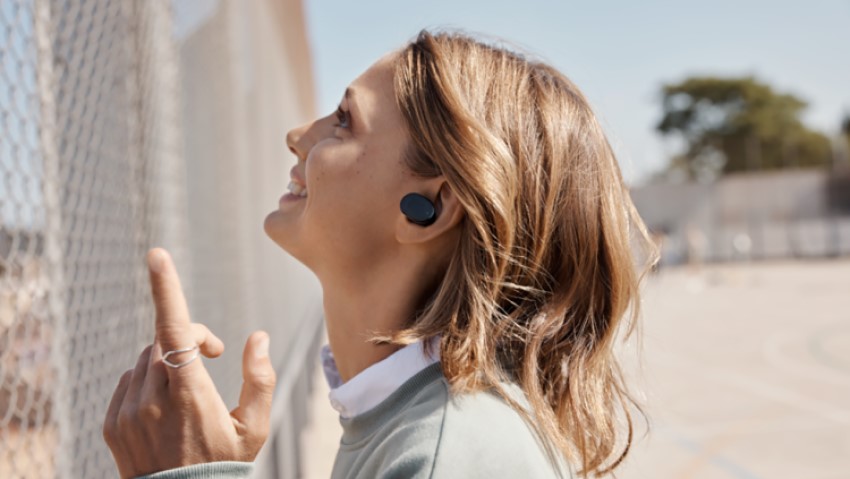Bluetooth earbuds are a popular form of audio equipment, and are often seen as a convenience for people who want to listen to music without having to carry around an extra set of headphones. However, there are some concerns that Bluetooth earbuds may be bad for your brain. So, are bluetooth earbuds bad for your brain?
If you’re looking to use Bluetooth earbuds to listen to music, it’s important to be aware of the risks and consider other options that may be better for your brain. There is information about this that you need to know. Scroll down to collect it!
What are the risks associated with using bluetooth earbuds?
Bluetooth earbuds have become increasingly popular due to their convenience and wireless nature. However, some people may be concerned about the potential risks associated with using these devices. Based on the provided web search results, it appears that the risks associated with using Bluetooth earbuds are minimal.
Bluetooth devices emit low levels of non-ionizing radiation which are not harmful to humans. The FDA confirms that exposure to low amounts of this type of radiation is not harmful to humans. Wireless headphones, including Bluetooth earbuds, emit a specific type of non-ionizing electromagnetic field (EMF) called radiofrequency radiation, but the levels are low and not considered dangerous.
However, to ensure Bluetooth security and privacy, it is recommended to turn off Bluetooth discoverability on Windows 10 devices by following the steps: Click “Start” -> “Settings” -> “Devices” -> “Bluetooth & Other Devices” -> Turn “Bluetooth” on -> Choose “More Bluetooth Options” -> Uncheck the “Allow Bluetooth devices to find this PC” box.

Are bluetooth earbuds bad for your brain?
According to the Centers for Disease Control and Prevention (CDC), non-ionizing radiation from wireless earbuds is not worrisome unless an individual comes into direct contact with the source, which is unlikely to happen with wireless earbud users.
Additionally, a 2019 study published in Environmental Research found that Bluetooth headphones emit significantly less radiation than phones, with levels ranging from 10 to 400 times lower than the levels emitted by smartphones.
There is an ongoing debate regarding the potential harm of Bluetooth radiation to the brain. While there is no conclusive evidence of the negative effects of Bluetooth radiation on the brain, some experts suggest limiting children’s proximity to EMR-radiating devices, including Bluetooth devices, as a precautionary measure.
Overall, using wireless earbuds is not likely to cause harm to the brain or hearing if used at moderate volume levels, as is the case with wired earbuds.
What are some tips for using bluetooth earbuds safely?
Break the seal slowly: It’s important to break the seal when removing Bluetooth earbuds to avoid damaging the ear canal. This can be done by gently pulling the earlobe down or pulling the helix up while removing the earbud.
Limit listening time and volume: To prevent hearing damage, it is recommended to limit listening time and volume. The World Health Organization (WHO) suggests using the 60/60 rule, which means listening at no more than 60% of the maximum volume for no more than 60 minutes per day.
Keep a safe distance from the device: When using Bluetooth earbuds, it is recommended to keep the device at a safe distance from the body to reduce exposure to radiofrequency radiation. The Federal Communications Commission (FCC) suggests keeping the device at least 20 centimeters (about 8 inches) away from the body.
Use headphones with lower radiation: Some headphones emit more radiation than others, so it’s important to choose ones with lower radiation levels. According to the Environmental Working Group (EWG), air tube headsets or wired headsets can reduce radiation exposure compared to wireless headphones.
Turn off Bluetooth discoverability: To reduce the risk of cyber attacks, it is recommended to turn off Bluetooth discoverability when not in use. This can be done by going to “Bluetooth & Other Devices” in Windows 10 settings, selecting “More Bluetooth Options,” and unchecking the “Allow Bluetooth devices to find this PC” box.

How to troubleshoot bluetooth earbuds issues
Bluetooth earbuds are a convenient way to listen to music or take calls without the hassle of wires, but they can also present some issues that may require troubleshooting. Here are some tips to troubleshoot Bluetooth earbuds issues:
Turn off Bluetooth on your device and turn it back on after a few seconds. You can also try to reset the Bluetooth connection by removing the device and then adding it again. To do this, go to Start > Settings > Bluetooth & devices > Devices, select the Bluetooth device you’re having problems connecting to, and then select Remove device > Yes.
Check the Bluetooth settings on your device and make sure that your earbuds are selected as the output device. You may also want to check if your earbuds support HD Audio or other features by tapping the “i” or the Settings cog next to them in the Bluetooth settings.
Charge both devices you’re trying to pair and make sure that the battery level is not too low. Some devices have smart power management that may turn off Bluetooth when the battery level is too low. If your phone or tablet isn’t pairing, make sure that both devices are charged and within range.
If your earbuds are still not working properly, you may want to try resetting them. The method for resetting earbuds can vary depending on the brand and model, so it’s best to check the manual or the manufacturer’s website for specific instructions.
Conclusion
Are bluetooth earbuds bad for your brain? This is a question that many people are asking these days. There are many people who believe that Bluetooth earbuds are bad for your brain because of the way that they use electromagnetic radiation. However, there is no concrete evidence that supports this claim.




